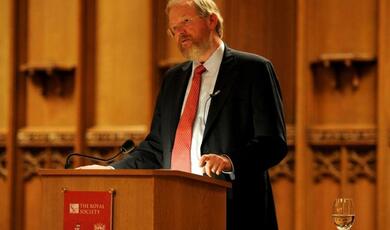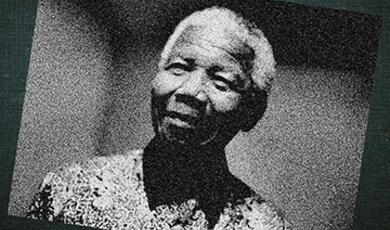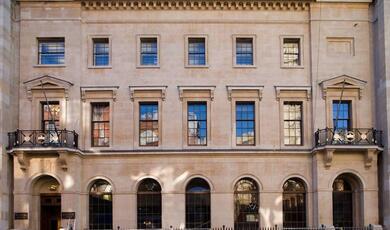Bridge over Troubled Waters or a Bridge Too Far? Philanthropy During Turbulent Times
Share
- Details
- Text
- Audio
- Downloads
- Extra Reading
Philanthropy has always been a feature of public life from faith and good works in medieval times to charitable giving today. This symposium looks at philanthropy in its historical context, reviews the work of the great philanthropists of the nineteenth century in particular, and asks what it has to offer in the world today.
Download Text
8 November 2012 Bridge over Troubled Waters or a Bridge too far? Philanthropy During Turbulent Times Tim Wilson I have been asked to say a few words about philanthropy, modern philanthropy particularly, and I am quite humbled by all of the comments that Hugh has been making about the challenges to philanthropy, so hopefully I will be able to reassure that modern philanthropy, whilst it has its own challenges, is a force for good, but it is a force for good that has enormous criticism, I think, in terms of its method and approach, so I want to say a little bit about that. I come from an organisation with medieval routes but progressive ambitions. City Bridge Trust is an old philanthropist, and I want to say a few words about that. I also want to say a few words about what links us to the exciting work that is being done by some subsequent speakers this afternoon – I am very pleased to see Paul Cheng and Tim Jones from Allia here – ways in which we can strengthen philanthropic giving by working more closely with colleagues in the private sector as well as with statutory agencies. The talk is going to look at two issues in philanthropy: what do we support, the whole process of choice, because there are many calls on our money, our time, our talents; and how do we ensure that we make a difference - whatever it is that we choose to give to, how do we assure that we are effective? It is not a new problem. It is not even a nineteenth century problem. The words on the screen are from Aristotle, from 350BC. The challenges of philanthropy are not new. What do we support? There have been stages in the City’s history where it has been relatively straightforward. Here is, at its grandest, London Bridge. City Bridge Trust is a charitable foundation with ancient routes, back to the days in fact of William Rufus, who decided that London, for its future prosperity, needed a stone bridge across the Thames. The bridge took thirty years to build, and although that is not the first London Bridge, I am showing it because it is its grandest. By the fourteenth century, the medieval bridge, 900 feet wide, was home to 140 houses and shops, and of course, as any piece of civil engineering like that, required constant maintenance. Maintenance was paid for by tolls – to cross the bridge, you paid. Rents, property on the bridge, residential, commercial – you paid a rent. Fines - if you wanted to throw something off the bridge and you were caught by the constable, you would pay a fine. If you wanted to go under the bridge, you had to pay, and apparently it was a very dangerous thing to do, to shoot the rapids through the bridge. You can see the patches of white water through the arches of the London Bridge. And also, you were charged if you wanted to put a head on a spike. So, if you, for example, caught celebrated Scottish freedom fighter, Mel Gibson, and you wanted to display his head on the bridge, then you would pay for it. Put Thomas Moore’s head on the spike, you would pay. All of this was entirely commercial to maintain the City’s bridge, and it was at the heart of London’s commercial success. The bridge was initially the King’s responsibility, until Henry III, when he gifted the bridge revenue to Eleanor of Provence as part of her bridal price, but she spent it on herself rather than on the maintenance of the bridge and the bridge fell into disrepair. When children sing that London Bridge is falling down, Eleanor is the “my fair lady”, offering a series of helpful suggestions about what sort of building material to use to repair the bridge. But that is when it passed out of the hands of the monarch and into the hands of the City Corporation, which itself is a very old institution, pre-dating, as I discovered when I went to work for it, Parliament, and, as I have discovered, some of the people who work there pre-date Parliament as well – not all of them, but a few. The City built London Bridge up again, and that is when responsibility for the bridge passed to the Bridge House Estate. Medieval benefactors, wealthy merchants, would give their money to God and the bridge. They would give it to the Bridge House Estate, a monastic order who would look after the money and the bridge, and philanthropy then, if we could call it philanthropy, and I think, challenged by Hugh, perhaps we should not call it philanthropy, but when I was putting these notes together, I was thinking perhaps that is an early form of philanthropy, but it was a salve. It was an act of devotion and, in many respects, it was a competitive act of devotion. It was a very public giving towards very specific ends: to the glory of God and to the glory of the City, and the maintenance of the bridge. Yes, the monastic order would support a degree of good work, but at no point were they dealing with the causes of problems in society, and of course, if you think of all of the social problems of medieval society that their giving ignored. Their giving was based I think on what, to our minds, is a very simple, often brutal, perspective of why people lived lives that were better or worse and what position people should occupy in society. I believe this is the first pitfall of philanthropy: spending, which is on the consequences of poverty and depravation, but spending which fails to address the root causes. However, I am not going to complain too much, because very careful management of those medieval gifts led to the formation of the City Bridge Trust. By the mid twentieth century, City Bridge Trust, and of course, by this stage, there were a number of bridges across the Thames which were in management of the City corporation, it was calculated that the City Bridge Trust endowment was enough to demolish and re-build the city’s bridges several times over. We were what is known as a failing trust – we could not spend the monies we had towards the objects that had been set, and so we applied to the Charity Commission and to Parliament for a variation in our charitable objects, and in the mid-‘90s, the agreement was that, annually, surplus interest on the Bridge House Estate endowment could be spent to address issues of depravation and inequality in London. Each year, we award over £15 million, so it is quite a healthy surplus interest, to charities, or charitable activities – I think that is important and I want to come back to that later – working to address depravation. I will return to the question: what should philanthropists support? Well, we, as a trust, we are bound by our objects to focus on London and London activities. What is a good use of £15 million each year in one of the world’s most prosperous cities? And, rather depressingly, there is far too much choice. One in four young Londoners, 16 to 24 years old, are neither in education, employment or training, so much so that, if we had been picking up copies of the Evening Standard recently, we would have seen, alongside all of the very good initiatives around apprenticeships, that a number of commentators are talking about the possibility of a lost generation, a generation who are lost to the groundings in the employment market and all of the lost tax payments that will pay untold negative dividends in the future. Is it an issue perhaps where we want to respond to issues of mental health? Nine out of Ten prisoners, for example, have a mental disorder. There has been an eighteen percent increase in suicide rates for men aged between 35 and 54 over the last ten years, a rather startling fact that I learned recently when I was in conversation with a charity that works to support veterans of the Falklands. More Falklands veterans have committed suicide since the end of that war than died in the war itself. Or is our focus on older people? Should it be older people? Dementia rates are set to double in the next 30 years, and all of the consequent pressures that that will bring on the public purpose. Pensioner poverty affects twenty-nine percent of older people in inner London and nineteen percent in outer London. Is it criminal justice that we should be responding to? Re-offending rates are incredibly high for adults released from custody in England and Wales – it’s 47.9%. When you look at the educational attainment levels of prisoners, it is startling: 82% of prisoners have a level of writing at or below that expected of an eleven year old. Finally, the number of issues we could respond to is astonishing, but just on domestic violence, we were doing some research recently and we unearthed some evidence that 71,000 cases of domestic violence in London each year, and the response to those cases costs £918 million. There is a lot of pressing problems, and all of this is pressing at a time when funding for charities is increasingly being squeezed. Local authority funding for the voluntary sector, for example, which has been a very high contributor to charitable activity in London, will decrease by £382 million this year – that is across the UK – and by £802 million by 2016. So, present need, in many cases growing need, but finances growing increasingly tight… What might be your cause and what might be the cause that we choose? I think, fundamentally, the choice is personal, whether it is young people or feral cats or Sumatran tigers, natural disasters or pre-school children. There is almost certainly something which will pique your interest, and the advice to engage heart first and then engage mind is, I think, sensible, because that is likely to maintain your interest in whatever it is that you give, but I would encourage any institution, certainly any other organisation that we talk to, and when we consider our giving, we always think, well, what are the unfashionable issues – where is the pressing need, where, for example, when we catch the tube or the train, do we maybe see some posters for some very sophisticated organisations who can market effectively and press their cause, but which organisations or activities do not do that and do not have the wherewithal but nonetheless undertake some tremendously effective work. Once you have chosen your cause, then it is time to engage the head, and that is where continually struggle, thinking about how our money, how our time, how our additional contributions make a difference. The first question that we ask ourselves then is: what is the nature of the problem that we are trying to solve? Are we looking at a problem that is simple and bounded, or is the problem complex and potentially unbounded? I want to illustrate this with a story. Several years ago, I took a very early morning flight from the very unlovely Heathrow Terminal 2 to Charles de Gaulle. I had a connection, involving a bus, a travelator, rather a long sprint with luggage, but eventually, I made it, and I was on a flight to Togo. Into Togo, into Lomé, staying very briefly in Lomé, I then travelled up-country to Atakpamé, which is about quarter of the way up the country, but, you know, it took quite a long time to get there, and Atakpamé really felt quite a world away from Lomé. It did not have electricity at night, it had only a few rudimentary services, educational facilities in the town were fairly poor, there was not really very much in the way of employment opportunities, outside of subsistence agriculture. People gravitated to Atakpamé for market days, but otherwise, it was not a place that was anywhere near as prosperous as Lomé, and Lomé certainly wasn’t anywhere near as prosperous as many other West African cities. That was not the end of the journey. We left the paved roads at Atakpamé and we travelled for two hours to a small village, and I am ashamed to say I actually cannot remember the name of the village, which is not particularly respectful of the people who live there, but the organisation that I was then working for supported a community school in this village, and by the time I arrived there, it really did feel like a very long way from the source of the funds that was supporting the work. The principle of the giving that we were attracting, at that time, was education, children’s education, but of course, children’s education in an environment like this village, two hours from Atakpamé, was…a number of problems in and of themselves which interlocked and needed to be addressed in very different ways. Some were very simple problems: building a school is a relatively simple enterprise, and finding the amount of money to spend on that was relatively straightforward for us, as was maintenance of the school’s fabric. Solving problems like the lack of books, the absence of school furniture, again was relatively straightforward, but then there were more complex problems to tackle: ensuring for example that the school had skilled and motivated teachers. It was not, as you can imagine, particularly alluring for some of the best teachers in Togo to teach outside of Lomé. You could, at a push, encourage them to come and teach in Atakpamé, but it was very, very difficult to get good teachers to come and teach in a community that, to them, felt like it was a very long way from anywhere else. Also a problem was making sure that the school term would fit around the agricultural calendar. There was no point scheduling lessons at a time when the children were needed for harvest. So, some of it was making proper accommodations, recognising the fact that the children did contribute to the household economy, and education had, at times, to take second place. Forming a committed Parent Teacher Association was complex, but not impossible, problems to solve, and there were some very, very skilled local development workers who had tackled these extremely well. The most complex problems that arose were around issues like boosting rates of school attendance. For example, the lesson that I saw, it was evident that there were no girls in the glass who were beyond the age of puberty, and even pre-puberty, there were far fewer girls than boys attending. It tended to be the more prosperous families who would send their children to school in the first place, so there were issues there around who was served by the school and who was not served by the school, and that required a response that was beyond the walls of the school itself. It was not something that could simply be solved through money. Simple problems, our money may solve directly and individually, but very, very few problems, very few social problems, very few development problems of course are simple. Now, this man is Thomas Thwaites, and he is the man behind what is called the Toaster Project. If you think about a toaster, and I am going to talk about a very cheap toaster here, from Argos, it contains something like 400 components, just to make a piece of crisply, evenly-toasted bread. Thomas Thwaites, with single-minded dedication, set out to build a toaster from scratch. I am not talking about going and buying the components. He actually built everything, from scratch, and it took him nine months to do this, and involved digging up the raw materials, it involved extensive travel, but all of this to assemble what was required to put a toaster together. Now, given that Argos sells its toaster for £3.94, this was quite an undertaking. One of the lessons learnt from Thwaites’ endeavours, beyond the obvious that it is actually probably better to go to Argos than try and make your own toaster, is that we live in complex and highly specialised societies, and that we are able to produce toasters for throwaway prices because we collaborate. We solve complex problems by sharing skills. We almost never solve complex problems alone. This is very important because it speaks to the expectations we might have as philanthropists and the approach that we take. There is a man called Jed Emerson, who I enjoy reading. He is based in the US and he writes a lot about philanthropy and even more about social investment, and I am paraphrasing him here when he is talking about micro-finance and I am now applying this to philanthropy, but he said words to the effect that, as long as philanthropy promotes itself as a poverty-eradication tool, then lingering poverty with indict philanthropic leaders for failing to meet their obligations. When their beneficiaries remain poor, philanthropists will be accused of unsuccessful efforts. Philanthropists, and that includes City Bridge Trust, have to be very careful to avoid the hubris of thinking that our action alone can solve a complex problem. Instead, problems that we work to address, we should work with multiple actors. Here is the second pitfall of philanthropy: it is the over-reaching, the over-promising, the philanthropists who seek to solve something that is hugely complex and seek to solve it by themselves. Otherwise, if we try to do that, we risk being like the mathematicians in this slide, which I rather like because I think it speaks to us when we are designing our fantastic theories of change to say, well, if we fund this, then this is going to happen, and we will be in a brave new world, and then we need to row back a little bit. But thoughtful philanthropy requires a willingness to engage a broader number of agents, not just funding projects, and we cannot work successfully if we are isolated. Philanthropists are required, I believe, to forge alliances. We are fortunate in that we have, relatively, great financial security and we can work as a convenor, bringing networks of actors together. That takes time. Foundations, generally, fortunately, survive the limited tenure of elected governments, so someone like, say, an institution like City Bridge Trust can focus on a problem for decades and work to address it, despite changes in government, harnessing whichever other agencies are interested to address this in the way that seems most effective. Philanthropy working in alliance with charitable organisations, yes, but not exclusively, also with private sector organisations and with the public sector, and with community groups themselves, and Hugh rightly pointed out that there is great resistance to the idea of philanthropy “being done to” people. So, thoughtful philanthropy would seek, as far as possible, to work collaboratively with community groups because, otherwise, all of this action, if it does not involve proper participation from the community, then it risks being unsustainable. Back to Togo, if the community groups had not bought in to the notion of the school, if they did not participate in the PTA, that school really would have achieved even less than we felt it did, and we struggled sometimes with that particular school, with what it was doing. There are plenty of precedents of this collaboration and, yes, I do take Hugh’s point about where the Victorians fell short, but they did some amazing things. They tackled cholera and they tackled other diseases that were caused by poor sanitation, and that was largely due to collaborative efforts between government, philanthropists, private investors, and all of that made our inner cities far healthier than they were a hundred years ago, or more. This is about bringing together multiple talents and mobilising additional resources, and we have got a lot of talent to draw on. I mean, in a similar vein to the toaster and the 400 components in the £3.94 Argos toaster, McKinsey, who have an almost single-minded dedication to unearthing some of the knottier problems of life, a guy called Eric Beinhocker of McKinsey Global Institute, he estimated that the number of products and services available in a big urban economy like London ran into the tens of billions, so there is a lot out there to engage with – that is a lot of talent to work with. Back to Togo, the thing that made the most significant change to that particular school in Togo came from the private sector. It was a mobile phone transmitter, which a commercial enterprise put in the village, and the availability of mobile paid dividends in what was an agricultural community because farmers could check the market prices of their crop and they could enter into contract and they could arrange and pay for visits from vets, and all of that led to increased household income, it led to greater financial security for the households, and a greater willingness to send children to school. Some closing comments on philanthropy in troubled times. We need to be willing to take a very mixed approach to the organisations we work with. There are definitely proven successes, and we do seek them out, and we look to fund not just the work that they deliver but also their core costs. And I think, where some people, some organisations, are particularly keen to see all of their money go into service-delivery, if any of you are considering which charities to support, I would say please do not get hung up on administrative costs because, very often, they are not an indication of a well or badly run charity – it is much more complex than that. Willingness to back success, taking time to scrutinise the data, asking for better data. Yes, picking the area of support on very personal grounds or organisational grounds, but then scrutinising the data that we get back. Some of the organisations we support, we criticise greatly because they are very good at telling good news stories, and they have got lots of good case examples of people whose lives have been changed, and you say, “Well, no, no, no, no, the scale that you are working on, you have to tell us more than that – we need to know that we are better spending money on you as opposed to an organisation over here.” So, being that critical friend to the organisation that is being supported… But I think, also willing to back innovation, recognising that a lot of the problems that we are looking to tackle, they are engrained. People do things now that they did not try ten years ago, and we should be willing, as a philanthropist, to support trials, to support events, activities that will fail, but to learn from them and adapt, and the process continually of thinking, right, how do we turn society into something like that £3.94 toaster? Very efficient at doing what it should, by pooling skills in a talented way, and you get a £3.94 toaster from Argos precisely because people have tried and failed and they have learnt from and they have adapted, and we should be willing to do the same in our social development activities. I would like to see – we do not offer it ourselves, but some do, particularly from the US – challenge prizes in philanthropy, so that organisations could win an additional injection of funding if they manage to find new ways of resolving some of society’s knurliest problems. Philanthropists also have to be better at using their own data. We, for example, hold a treasure trove of information and data, and it sits in a cupboard, and I am ashamed about that because I think we could learn so much from it if we approached it systematically, but we tend to have a bias for action. Too often, I think we set very high aims for ourselves, and then we go about funding a lot of projects, and it is about taking time to say, well, how does that lead to that, without saying, well, it is miraculous. We are not as good at saying how effective we are, whether we spend £15 million annually in the most optimum way. There are some very interesting experiments from the US in this field, and open data, where philanthropists share information about the work that they are doing, and the difference that they are making is made public and then data experts can examine that and ask critical questions of the philanthropists, or spot patterns, commonalities, that the institutions may not think of themselves. We have to think of better ways of using our financial resources. I am not going to discuss social investment, but it is a new and exciting area, and I think other speakers will say more about that, but if you think about, for example, our £15 million is from interest on our endowment fund, then you could ask the question: well, what is the endowment fund itself doing and how could that be used for social good? One of the worst examples I ever heard was a foundation – and I will not name them – who worked to address issues of respiratory cancers, and they have their grants committee and they identify the charities they wish to support. They have, quite separately, a finance committee, who consider where the endowment is invested. Their largest equity holding is British American Tobacco. And it is about how the sum works towards the end goal. To conclude, society is a complex beast. Poverty and disadvantage are not simply the consequences of deficiencies and skills, application in harmful social habits, as some of the early bridge givers may have believed, but inequality and injustice play their parts and the solutions are very complex. There are frequent setbacks – that is entirely normal, but philanthropy is a fascinating discipline, and I think of it as politics without the bloodshed. © Tim Wilson 2012
This event was on Thu, 08 Nov 2012
Support Gresham
Gresham College has offered an outstanding education to the public free of charge for over 400 years. Today, Gresham College plays an important role in fostering a love of learning and a greater understanding of ourselves and the world around us. Your donation will help to widen our reach and to broaden our audience, allowing more people to benefit from a high-quality education from some of the brightest minds.


 Login
Login







